This guide is a collection of lessons learned and experience gained over the last 3 years of commuting first on a Golden Motor Magic Pie electric kit bike and subsequently a Specialized Turbo.
Why buy an electric bike?
- Because you’ll ride more often, because it makes riding a hilly city like Sydney as practical as riding a flat city like Amsterdam.
- As a keen cyclist I used to ride to work sometimes, it was never every day though. I tended not to ride if I knew I was going to be late coming home or had a work function in the evening. I didn’t ride on Monday’s if I was overly tired from the weekend and even 1-2 beers after work at the end of the week was enough to stop me riding on a Friday.
- The bike I rode to work was also my exercise bike so it never had a rack on it so wasn’t of use for local shopping trips on the weekend.
- Some years I didn’t have access to showers in the office so I didn’t ride very often then, especially not in summer. In the time that I did, my 30 minute commute to work involved another 10-20 minute routine cleaning off the sweat at the end that wasn’t really justified for such a short exercise time.
- Adding a longer exercise ride on route to work meant donning the lycra and then trying to dodge co-workers to avoid awkward encounters.
- The electric bike in comparison:
- Allows me to ride to work without needing to change. I’m not in a suit but I normally wear a collared shirt and dress pants. The extra assistance means I don’t break a sweat. I’m summer I go a little easier to stay cool and winter a little harder to stay warm.
- Is fitted with a rack, panniers, lots of lights, mud guards, a mirror, a suspension seat post and a more upright configuration making for a more comfortable and safe commute than my exercise focussed road bike.
- In the pannier I permanently carry full wet weather gear consisting of over pants, short and long sleeve high visibility jackets and overboots so I can ride in all weather.
- Is used to replace not only the work commute but personal transport where travel time is regularly faster or more reliable by bike (than car or public transport) and is free of parking challenges. My door to door travel times on trips less than 15km from home are consistently faster than public transport or car.
- Most importantly – I use it very frequently, most days. It almost entirely replaces my use of public transport and taxis.
Quality
- Aesthetic and function: in line with traditional bicycles electric bikes come with the same variation in quality as it effects finish and operation of the bike. Decide how important this is to you and what your budget is. Standard components such as group sets, wheels, headsets give a good guide. Keep in mind that electric bikes often do more kilometers and experience a harder life due to higher average speeds and increased bike weight.
- Reliability: bicycles today in their most elementary form are reliable after decades of evolution. The electrical components are not. Higher quality equals less frequent failures. When failures do occur unless your are skilled with electronics you won’t be able to fix it yourself. If you’re in this category – think seriously about a generous budget to acquire a high quality bike.
Vendor support
- Traditional bike maintenance is almost entirely universal, any bike shop will happily work on and be quite capable of repairing any brand of bike. This is absolutely NOT the case for electric bikes. Some electric bike shops outright refuse to work on cheap or unbranded electric bikes.
- When failures with electronics do occur you almost certainly going to need support from the company that sold it to you.
- If you’re skilled with electronics, most failures are likely to require replacement parts. Consider how many are being stocked by your local supplier. If you’re buying online consider shipping costs, freight charges on inexpensive parts become significant especially if they’re being shipped internationally. Time spent waiting for parts is time your bike is off the road.
- Consider the size, history and reputation of the electric bike shop you’re from. What happens if they go out of business? Are there other shops in your area that sell and support the same brand of bike or kit?
eBike Kit vs factory built electric bikes
- A number of kits are available and if you have a suitable existing bike they offer a cost effective entry point.
- The advantages of factory built bikes centre around adaptation of the frame to suite the electronics and drive system:
- Integration of components – cabling, speed controllers, battery mounting systems, in-built lights and battery locks are often all neatly mounted.
- ebikes place significant loads on the frame around the point that the drive axel connects to the bike. Factory built bikes are strengthened in these areas.
- The batteries and motor add significant weight to the bike which is catered for with an appropriate level of all round frame strengthening.
- User friendly fastening mechanisms for attachment of the drive wheel allowing for easier fitting and removal.
Power & Range
- You need to match the bike you buy to what you need from it in terms of power and range.
- If your commute or riding path involves a lot of hills and elevation changes – climbing power is critical. This is measured in Watts. Bikes vary in specification from the regulatory 250W level through to 1000W. 250W is not enough power to provide meaningful assistance on steep inclines.
- The combined weight of rider and luggage have a material effect on the performance of your bike. Heavier riders which be more effected by the power level and have a very different riding experience to lighter riders. A 60 kg rider on a 250 Watt 20 kg bike has a ~40% higher power to weight ratio than a 95kg rider. Put another way, the heavier rider needs 350 Watts to have the equivalent amount of assistance from the bike as the lighter ride from a 250 Watt bike.
- Calculate the distance you need to cover and ensure the bike has sufficient battery capacity to get you there. If you regularly commute to the same location and have the ability to charge at each end, a second charger may mean you only need sufficient range for a one way trip.
- Range is governed not so much by the power of the motor but more the capacity of the battery.
- Battery capacity is measured in Amp hours or Watt hours.
- Watt hours is the more useful number. Amp hours can be converted to Watt hours by multiplying Amp hours x Voltage (normally 24, 36 or 48 V). 10 Ah at 24 Volts, gives 10 x 24 or 240 Watt hours.
- Be conservative in your calculation as depending on how tired you are, how fast you ride or even how much of a head wind you experience a 10-20% variation in range is to be expected.
- Most ebikes are heavy and many have significant rolling resistance in the motors. You’ll never want to be riding without power so ensure you allow for range greater than or equal to your commute.
Front vs rear motor
- There are pro’s and con’s to each but in my view lower power (250Watt) motors are more suited to front mount and higher power (500Watt+) to rear mount.
- Front mount:
- Separates motor power from pedal power. This in turn offers more freedom in configurations for your regular gearing such as the use of hub gears, belt drives, derailleur mounting systems etc.
- Applies the power from the motor through the forks which are generally weaker than the rear on standard bike frames.
- You might not be able to use the motor to help get the bike up ramps that you need to walk along side the bike due to lack of traction.
- If the battery is mounted on a rear rack or vertically behind the seat tube it offers a good weight balance.
- Rear mount:
- Better positioned for delivery of higher power outputs with increased traction.
- Provides a more natural power delivery – think motorbikes.
- Keeps power and steering separate – important with high power delivery.
- Rear rack mounted battery’s are problematic due to weight concentration at the rear of the bike but become balanced with a lower center of gravity if the battery can be mounted within the centre triangle of the frame.
Throttle vs Pedal Activated
- Thumb or grip throttle act much like a motor bike accelerator, power is delivered by twisting the grip or pushing the button.
- Pedal activated use a torque or cadence sensor connected to the crank or pedals respectively that adds power as you pedal. Bikes such as the Specialised Turbo appear to take this a step further by incorporating an inclinometer with the torque sensor to increase power when climbing hills.
- Having used all four variants I can’t recommend strongly enough a torque sensor based throttle.
- A torque sensor free’s your hands and your mind of thinking about acceleration control bringing the riding experience back to that of riding a normal bike.
- Not having to think about a throttle makes riding safer.
- Power activated by pedalling keeps your legs moving, even if only lightly, providing a gentle form of exercise on par to walking that is good for you health.
Bike weight
- The added weight of the battery, motor and often strengthened frames puts most electric bikes in the 20-30kg range.
- Larger batteries that provide increased range add weight to the bike so think about your route and ensure you’re not carrying more battery than you need to complete your journey.
- Higher end more expensive bikes often incorporate newer and better battery and motor technology that comes with weight reductions.
- From a commuting perspective the additional weight of the bike is itself not a problem. It predominantly effects acceleration and has minimal effect on effort once you’re up to speed (due to momentum). The power of the motor more than compensates for the additional weight.
- Bike weight is primarily of concern if you need to carry the bike up stairs during on your route or for storage or access to power for charging at either end.
- 20 kg is a weight that most people can lift but a bike pushing 30 kg may mean you can’t.
- The location of the weight must also be considered. A rear mounted motor and battery put all of the weight over the back wheel making it far harder to lift than a bike with more even weight distribution.
Options
- Gears – higher powered bikes will mean you’re much less reliant on gears due to the assistance from the motor. You’ll mostly need the very low gears if you run out of battery and need to get your heavy bike home without help. Look for something with a simpler gearing configuration that will be easier to ride and maintain. A geared rear hub or a single rear derailleur is preferred.
- Regenerative breaking – it’s nice to have and sounds good but in practice doesn’t save much battery or increase your range. Expect low single digit percentage increase. If it’s strong, it will take the load off your brake pads and increase their life.
Chargers
- A second charger will extend your range if you can leave it in a location you regularly commute to.
- Chargers can be solid state (think laptop charger) or have fans (think old style computer case). If you’re charging at work, in an office or inside your home the noise of the charger may be problematic. Check your options before buying.
Accessories
- Suspension – Electric bikes are heavy and commonly have reinforced frames making for a rigid or even jarring ride. Your average speed is often higher increasing the effect of bumps. Rear suspension is uncommon so consider a suspension seat post such as the Thudbuster. Without wanting to add even more weight, front suspension may still be worthwhile.
- Lights – you’ll ride your electric bike more and find yourself in the dark more often. Good quality, bright, USB chargeable lights such as the Comet by Moon Lights are a must.
- Rack & panniers – get your luggage off your back, keep your wet weather gear with you at all times and make yourself seen with high visibility Ortlieb panniers.
- Mud guards – make riding in the rain much more practical as well as keeping your bike in better condition.
- Flat tyres – are much harder to deal with on an electric bike. Your drive wheel may be bolted on, it will certainly be heavy as well as having a power cord attached.
- The additional weight means pushing an electric bike home with a flat tyre will destroy your tube and may damage your tyre and rim.
- Do everything you can to avoid them in the first place by fitting puncture resistant tyres, puncture resistant tubes and puncture mending goo inside your tubes.
- If your drive wheel is very hard to remove consider carrying a small hand pump and puncture repair kit so you can patch your tube without removing the wheel from the bike.
- A centre stand can also make working on a heavy bike on the road side much easier.
- Helmet mirror – it will take some getting used to but once you are, you’ll never ride without one again. If you’re commuting more and spending more time on the road safety becomes critical. A helmet mirror lets you monitor the traffic around you and spend more time in the middle of the lane and away from parked cars.
- Hi-visibility clothing – you’ll never forgive yourself if someone doesn’t see you and you’re injured because you don’t like yellow!
How much to spend
- Good electric bikes can be priced upwards of $5000. At first this might seem ridiculous amount of money to spend on a bike but remember that it will offset other costs.
- Weekly train or bus fares, taxis, tolls, petrol, car maintenance quickly exceed $2000/year for most commuters.
- A good bike is the cost of a small car but it could provide you with just as much or more value. Could it let you move from a two car to one car household?
- Whilst difficult to quantify – benefits to your health from riding every day are very real.
- If you can’t justify an expensive bike, start with something cheaper, confirm it’s for you and get confidence that you’ll live on it – then upgrade later and on sell your first bike.
What to buy?
- See our listing of electric bike brands available in Australia and our list of bike shops that stock them.

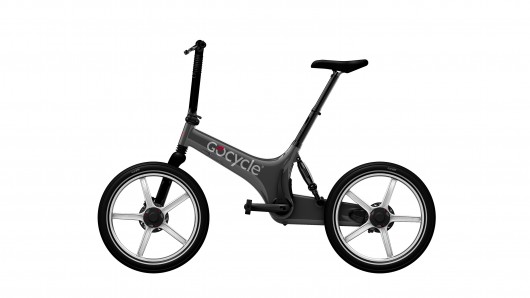

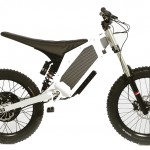
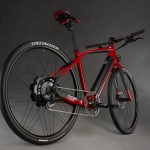
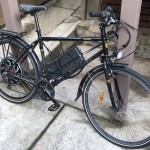
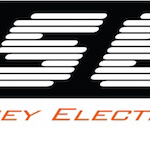
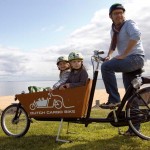


Respond to Electric Bike Buying Guide